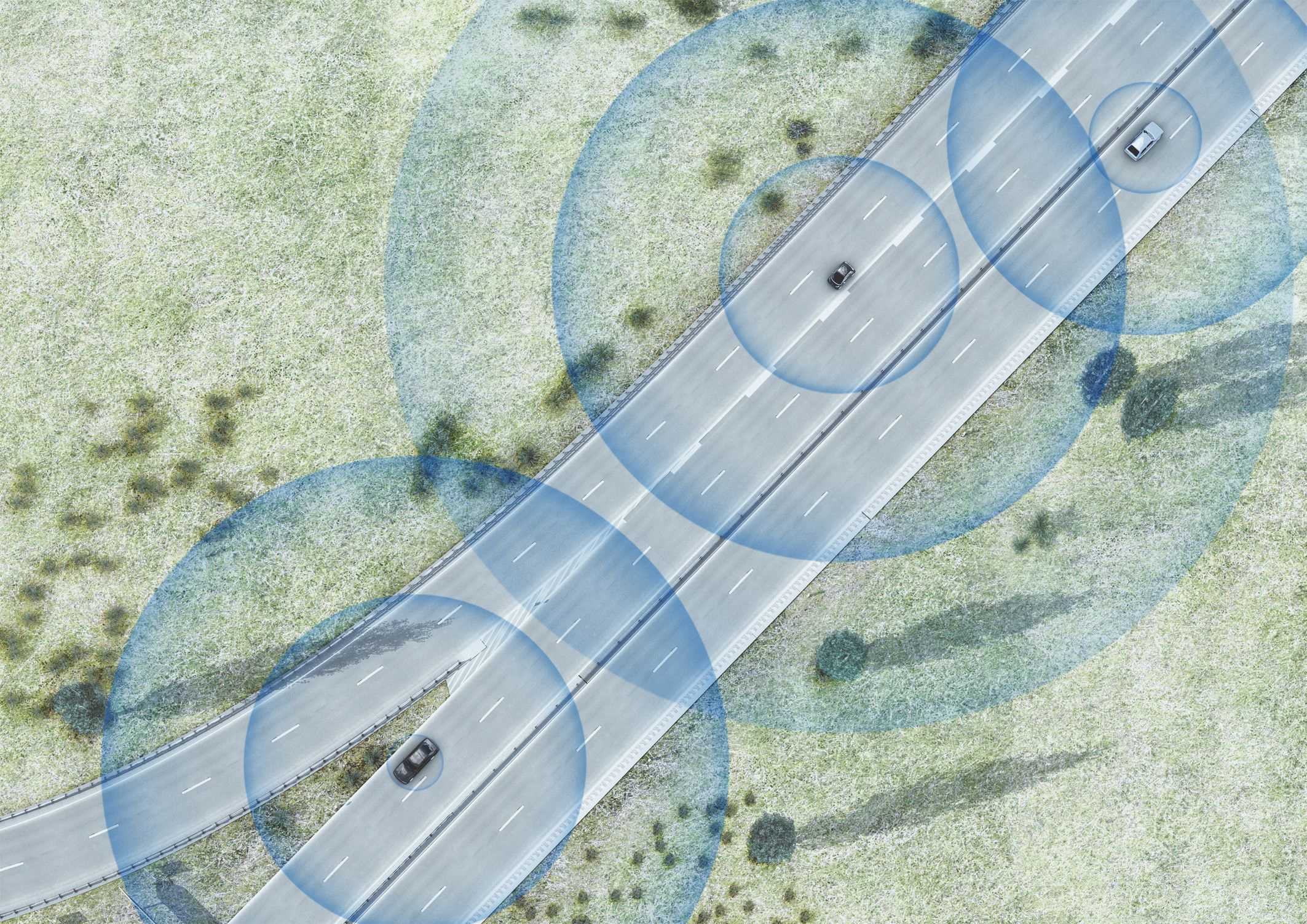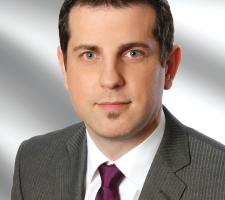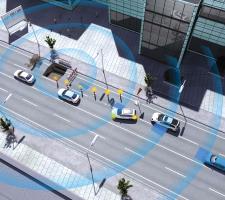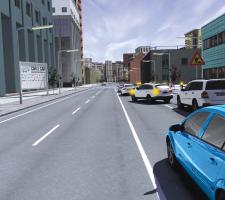
Probe data – the ability of every vehicle on the road to provide information on its surroundings – is another Day One C-ITS application (Picture Daimler AG)
ASECAP’s Marko Jandrisits discusses the Amsterdam Group’s efforts to bring a sense of order to cooperative ITS deployments.
When an issue arises which is deemed to require a technological solution governments and public-sector agencies around the world all too often tread the same sorry path. A decision is made to research and develop said technology to the production-ready stage, the work is done and the technology realised but then the money for deployment runs out and the technology is left on the shelf to gather dust. The transport sector is no exception and the recent economic slowdown in some regions has resulted in many infrastructure projects being cancelled or postponed. As a result, and in retrospect, the original timetables for the roll-out of next-generation ITS technologies, and especially Cooperative ITS (C-ITS) systems, now look hopelessly optimistic or even naïve.C-ITS development
Over the last few years, theTherefore the
The deployment strategies and business cases for C-ITS have not gone entirely unconsidered. For instance, the EC’s iMobility Forum provides a platform for European ITS stakeholders to discuss, define, coordinate and support activities to further innovation, research, development, deployment and the use of ICT-based transport systems and services between 2010 to 2020. Work on C-ITS has been undertaken within the Forum’s Intelligent Infrastructure Working Group but it was felt that a new group was needed to build upon this.
A new forum
Such thinking led to the setting up of theMarko Jandrisits chairs the Permanent Committee on ITS at ASECAP, the professional association of European tolled motorway operators and is also his Association’s member of the Amsterdam Group. He notes that the Group has some unusual ways of working when viewed from an EU context which has a top-down approach to matters such as ITS standardisation and deployment. In the case of the Amsterdam Group, market forces are in many ways dictating the agenda and setting out to achieve results while the EC acts in a supporting role.
The Group is taking advantage of the extensive development work carried out in the projects listed above, Jandrisits continues: “Effectively, we’re saying that we have results, now we need to agree on the next steps. We need to look at a range of use cases or applications to be deployed and to an agreement on common marketing strategies. How are we going to sell cooperative systems? Do we, for instance, have to standardise with Japan and the US?
“These are all open issues which are reflected in a road map document currently being ratified within the Amsterdam Group’s partner organisations. ASECAP has already given its approval and the end result will be a ‘menu’ for the various stakeholders to follow.”
Proceeding with caution
It is important, he says, to think in terms of evolution and not revolution. ‘Day One’ go-live should not be a deluge of use cases and data as there is a significant possibility that this will confuse rather than inform the driver. A four-staged ramp-up is envisaged: an initial launch of basic warning services with more advanced warning services following on, then sensor fusion and, in about 25 years time, the full deployment of more advanced services. The recently announced C-ITS corridor running from Rotterdam to Vienna via Frankfurt provides an illustration of what Day One will look like – an initial road works warning application and anonymised data gathering services for road operators is envisaged.“We need to take care at the very start of this new market because we really only have one chance to get the launch right,” Jandrisits says. “If we make it too complicated it will fail and failure, given the high cost associated with deployment, would make it far less likely that people would give it a second try. Also, we need to ensure that there are benefits to be had from C-ITS for all concerned.”
With provision of better services for customers a key differentiator for toll scheme operators, it is important for C-ITS to have the support of organisations such as ASECAP. Its participation in the Group is an affirmation that the support is there, even if there is no explicit statement that toll concessions will be Day One implementers. There is a desire for implementation to be market- rather than legislation-led, albeit with an understanding that safety is paramount. It should be noted that the shifting dynamics of C-ITS leaves infrastructure owners and operators in particular facing something of a dilemma. They need to remain technologically current and have a say in how, where and when C-ITS technology is deployed, even if they themselves are not among the early adopters.
“Take floating vehicle data as an example – if road operators can receive data from a significant proportion of the vehicles using their facilities they will experience a tremendous increase in their ability to detect and monitor traffic conditions. If cooperative systems are available as a tool there’s no doubt that concessionaires will use them but it’s the car companies which will take many of these developments forward,” Jandrisits continues. “From 2015 we’ll see 802.11p fitted for vehicle-to-vehicle communications but the infrastructure operators are going to be looking to ensure their slice of the cake. It’s not so much a technical question of ‘which’ but ‘how?’ Cellular, internet and RDS-TMC service providers are all included in the current discussions.”
First impressions
A Special Interest Session at ITS Europe in Dublin gave attendees an initial look at the Amsterdam Group and at first use cases.However, Jandrisits sees the tri-national Rotterdam/Frankfurt/Vienna corridor as the most significant step, as the Netherlands, Germany and Austria look to position themselves in the C-ITS market. He believes other corridor initiatives connecting to the Austria/Germany/Netherlands corridor, will follow.
In outward-facing terms, the next step for the Amsterdam Group will be a workshop, which will take place in Brussels in September 2013.
“So far, the Amsterdam Group has been something of a closed shop because the key stakeholders have needed to get on and make decisions but we’re now at a stage where we need to discuss our work with the wider industry,” Jandrisits explains.
Those interested in developments to date and the Brussels workshop can contact the Group via its website:
<%$Linker:














